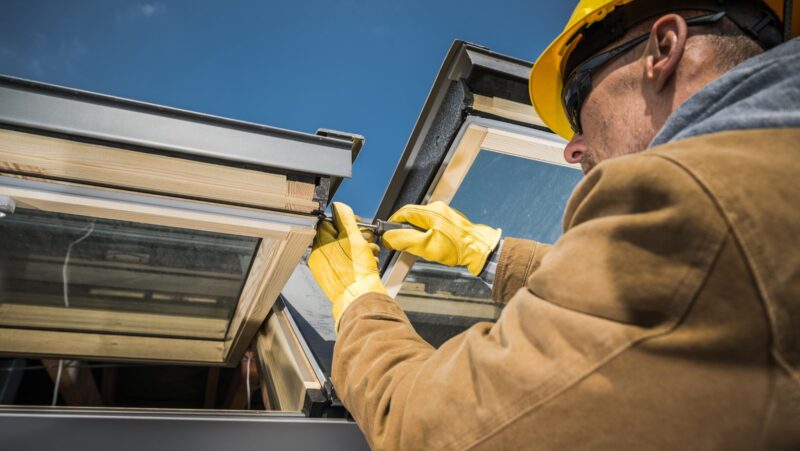Are you considering installing a solar battery for your home, but unsure which brand to choose between Enphase and Tesla? Look no further, as we dive into the ultimate showdown between these two popular options. With the rising popularity of solar energy, it’s essential to choose the right battery to maximize your savings and efficiency.
But, with so many factors to consider, making a decision can be overwhelming. This is where we come in. In this post, we will compare Enphase vs Tesla solar batteries’ features, benefits, and limitations, putting an end to the ongoing debate of which one is superior. Read on.
Table of Contents
ToggleUnderstanding the Solar Battery Market
The importance of the solar battery market cannot be overstated. This is particularly true as we pave the way for a more sustainable future. Solar batteries are the heart of an effective home energy storage system. They allow solar power users to store excess energy produced during the sunniest hours and use it when needed.
This is even at night or during peak energy consumption times. This capability not only improves energy self-sufficiency but also reduces reliance on the grid and, in turn, monthly utility bills. The market is currently dominated by technology leaders like Enphase and Tesla.
Who has developed robust, efficient, and user-friendly home solar battery options? Their products are designed to provide an advanced level of energy management.
It integrates seamlessly with existing solar installations or as part of a new photovoltaic (PV) system. It’s also helpful to consult an expert when choosing which batteries for your solar panel system are the best fit.
The Enphase Solar Battery Advantage
Enphase Energy is a leader in solar microinverter technology. It has brought its extensive expertise to the energy storage field with its Enphase Ensemble series. The Enphase storage system stands out due to its modularity and flexibility.
Each Enphase battery offers a storage capacity of 3.84 kWh. Homeowners can easily expand their storage by adding additional units.
Key Features of the Enphase Battery
First, the highest depth of discharge (DoD). It means it can use a higher percentage of its total capacity without impacting battery life. Next, enhanced safety with a completely isolated battery cell that operates free of high-voltage connections.
They integrate with Enphase’s monitoring and management software. It ensures real-time visibility into energy production and storage.
Additionally, a compact and wall-mounted design is suitable for installation inside or outside a home. Lastly, scalability to grow with your energy needs.
The Enphase system is known for its ease of installation and use. Its modular design allows for simpler transportation and setup. Its user-friendly monitoring system is accessible through a smartphone app.
The Tesla Powerwall: Setting the Benchmark
When it comes to home energy storage, the Tesla Powerwall is often the first product that comes to mind for many consumers. Designed to integrate seamlessly with the Tesla solar roof and traditional solar panels alike. The Powerwall offers a sleek, minimalist design and a robust set of features.
Key Features of the Tesla Powerwall
First, higher energy capacity, with a standard 13.5 kWh, peaking at 16.5 kWh. Next, a single, wall-mounted design that simplifies installation. Then, reliability is derived from Tesla’s automotive battery technology which prioritizes long-lasting performance.
Additionally, the ability to provide both backup and grid-support services makes it a versatile system component. Lastly, compatibility with the Tesla app and over-the-air software updates for continuous improvement and remote management.
The Tesla Powerwall’s industry-leading energy density means it can store more energy in a smaller space. This aspect has been especially appreciated by homeowners with space constraints. Who still want to store a significant amount of solar energy for later use.
Cost and Efficiency Comparison
Solar battery purchases should be considered as long-term investments in home energy. It means understanding the cost and efficiency of each system is crucial. Relative to cost, the Enphase batteries are generally considered more affordable than the Tesla Powerwall.
However, the total cost can vary significantly depending on factors. These such as:
- installation complexity
- upgrades to existing solar systems
- any necessary electrical work

On the other hand, the higher entry cost for the Powerwall is offset by its larger capacity. It potentially makes it more cost-effective for larger households or those with higher energy demands.
In terms of efficiency, both Enphase and Tesla batteries boast impressive figures. This means the measure of how much-stored energy will be retrieved from the battery.
Enphase’s lithium iron phosphate (LFP) chemistry provides a DoD of 100%. This is while the Tesla Powerwall can effectively utilize 90% or more of the energy stored within it.
Reliability and Warranty Considerations
Reliability and warranty are paramount for solar battery investments. This is because they reflect the manufacturer’s assurance in their product. It can also significantly impact the total cost of ownership.
Enphase offers a 10-year or 4,000-cycle warranty (whichever comes first) on their batteries. This is while Tesla provides an outstanding 10-year warranty as standard. Both are strong indicators of the confidence each company has in their product’s long-term reliability.
The Installation Process and Integration With Your Solar Panels
The process of installing a solar battery should be one of the most significant factors in your decision. This is how well it integrates with your existing or planned solar panel system.
The Enphase system can often be a quicker and more straightforward installation process. It’s also known for its modular and flexible design.

However, the Powerwall is designed with a specific focus on seamless integration with both Tesla’s solar products and third-party systems. It also excels in this area.
User Experience and Customer Support
When it comes to using your solar battery daily, the user experience can make a significant difference. These include:
- the quality of a manufacturer’s app
- customer support
- overall system operability
Enphase’s focus on user-friendly design and its established history with customer support provides a strong foundation for homeowners. Tesla is known for its technology-forward approach and top-tier customer services. It also brings a high-quality user experience to the table.
Enphase vs Tesla, Choosing What’s Right for You
In conclusion, both Enphase and Tesla offer innovative solar battery options for homes, with their unique features and advantages. It ultimately comes down to personal preference and specific needs.
We highly recommend researching and comparing both Enphase vs Tesla to determine which is the best fit for your home. Make an informed decision and harness the power of solar energy today!
If you want to read more articles, visit our blog.





